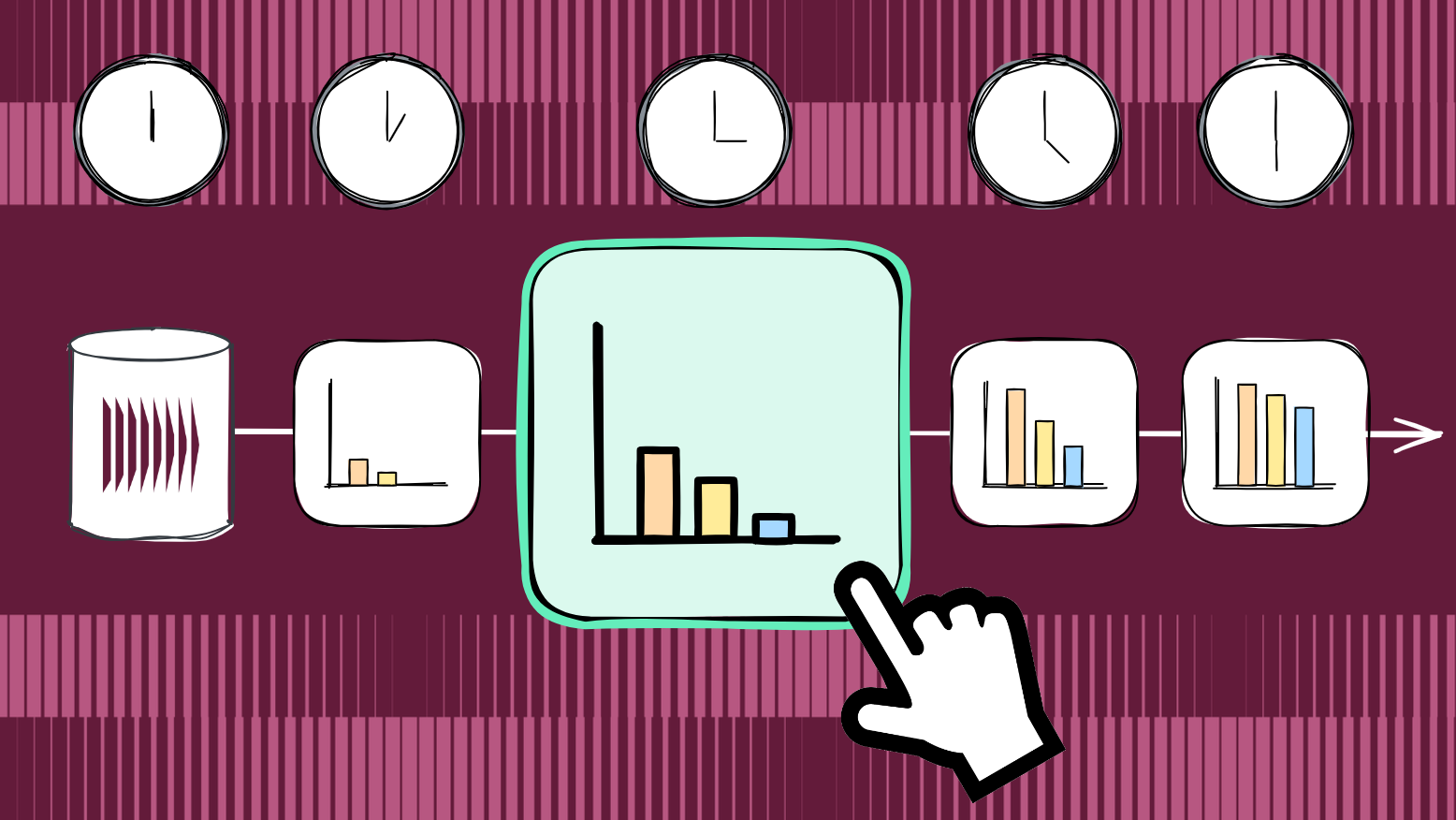Time Travel for Data: Traditional Workarounds vs. the Kurrent Way


Imagine you’re troubleshooting a million-dollar business dispute. A customer swears their account was set up differently last month. Your support team can’t find proof. Compliance is breathing down your neck. If only you could hit the rewind button on your data and see exactly what it looked like at that moment in time.
That’s the promise of time traveling in data systems: the ability to query and reconstruct your data exactly as it existed in the past. It’s not just for audits and compliance — it’s a superpower for debugging, analytics, and even simulating “what-if” scenarios before you make a change.
Why the Old Way Falls Short
Traditional operational databases are great at storing now. That’s because they were designed in an era when storage was expensive and performance was at a premium. Their job was — and still is — to keep the current state of business operations up to date, not to preserve history. Updates overwrite existing records, deletes remove them entirely, and once that happens, the past is gone.
Traditional Workarounds for History
When you need to look back with operational databases, most systems rely on bolt-on solutions like:
- Audit logs: Good for tracking who changed what, but since these logs live outside the main data, they don’t show exactly what the data looked like before and after, leaving gaps that make full reconstruction tricky.
- Snapshots: A saved copy or backup of your entire dataset at a moment in time. Complete, but taken infrequently and storage-heavy, so details between snapshots are lost.
- Change Data Capture (CDC): Tracks each insert, update, or delete as it happens and sends that information to other systems. This adds extra setup and moving parts to maintain, and if any changes are missed or lost, you can’t fully rebuild the past.
These approaches worked when historical queries were rare. But today, businesses need fast, accurate answers about the past without stitching together logs, snapshots, and partial CDC events.
Your Past, Queryable Anytime
Imagine if answering a question about your data’s past was as easy as running a single query or prompt. No prepping data, no piecing together logs or snapshots. Just ask — and get the full picture of that moment. Here’s what would be possible:
- Rebuild the full lifecycle of a customer account.
- See every change between two points in time.
- Replay past events to test new business rules.
- Trace every step of a transaction for SLA verification.
- Watch trends unfold month by month.
This isn’t a luxury — it’s becoming a must-have capability for modern data-driven teams.
The Modern Approach: Event-Based Time Travel
Instead of trying to patch history onto systems that weren’t designed for it, store your data as a sequence of immutable events. Think of it like a movie reel: every frame (event) captures exactly what happened, in order, with full context. To “time travel,” you just rewind to the frame you want and replay from there. Traditional databases, on the other hand, only keep the final frame.
The KurrentDB Difference
KurrentDB was built for time travel from day one. It records every change as a small, immutable, ordered event. Along with event indexing, this makes historical queries fast, accurate, and straightforward.
With KurrentDB, you can:
- Reconstruct any past state — no missing steps, no guesswork.
- Replay event streams for simulation, testing, or debugging — even far into the future.
- Meet compliance needs naturally — your historical event log is your audit trail.
- Model around business intent — events are meaningful (“order cancelled”) rather than low-level technical operations (“order updated”).
- Run lean — events are small, efficient to store, and natively indexed. No extra pipeline complexity.
How It Works in Practice
- Store events in ordered streams — Every relevant change becomes an event, stored in sequence.
- Replay on demand — Build any past state by replaying events up to a chosen timestamp or version.
- Optimize with snapshots — For very long histories, periodically store a snapshot to speed up replays.
The result: reliable, flexible time travel without duct tape or guesswork.
Where to Go From Here
If your current approach to historical data feels forced, it’s time to rethink it. With KurrentDB, you can make time travel a core capability — not a side project.
Next Up
Time Traveling Tutorial: Run sample codes to see how KurrentDB makes time travel easy and intuitive.
Get Started with KurrentDB: Explore the Getting Started Guide to learn about KurrentDB concepts and functionality.
Introduction to Event Sourcing: Understand the foundational principles of event sourcing and how it enables time travel.
